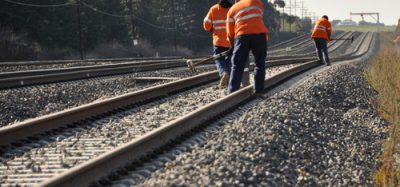More than signals and sleepers
Posted: 3 August 2010 | | No comments yet
Rail transport is essential to the UK’s economy. The Eddington Transport Study of 2006 found a clear link between transport capacity and economic performance, and noted that transport was an enabler of economic growth rather than a creator of growth in itself. Crossrail, for example, is expected to generate around £36 billion of benefits to London and south east England1.
Rail network passenger numbers are growing. Passenger numbers in 2008/09 were approximately double those recorded in the early 1980s, and almost 300 million greater than in 1950 when the network was significantly larger2.
Rail transport is essential to the UK’s economy. The Eddington Transport Study of 2006 found a clear link between transport capacity and economic performance, and noted that transport was an enabler of economic growth rather than a creator of growth in itself. Crossrail, for example, is expected to generate around £36 billion of benefits to London and south east England1. Rail network passenger numbers are growing. Passenger numbers in 2008/09 were approximately double those recorded in the early 1980s, and almost 300 million greater than in 1950 when the network was significantly larger2.
Rail transport is essential to the UK’s economy. The Eddington Transport Study of 2006 found a clear link between transport capacity and economic performance, and noted that transport was an enabler of economic growth rather than a creator of growth in itself. Crossrail, for example, is expected to generate around £36 billion of benefits to London and south east England1.
Rail network passenger numbers are growing. Passenger numbers in 2008/09 were approximately double those recorded in the early 1980s, and almost 300 million greater than in 1950 when the network was significantly larger2.
The coalition Government has placed railways at the heart of their plans to meet the UK’s transport needs. As well as commitment to flagship programmes such as Crossrail and High Speed 2, other schemes – including the Manchester Metrolink upgrade – signal an ambition to grow the UK’s rail capacity.
However, the economic downturn and the need to reduce the UK’s structural deficit has moved the debate from capacity to affordability. There will be intense pressure on the public sector bodies largely responsible for the UK’s rail network to deliver greater value.
This is the major challenge facing the network today, and is one in which engineering consultancies will play a major role in helping to meet.
Consultancy and engineering is a significant part of the construction supply chain. In 2009, despite the difficulties caused by the global economic downturn, UK-based consultancies secured £12.9 billion in fees, an increase of nearly £3 billion on the previous year3. This equates to almost 1% of the entire UK economy.
While engineering consultancies operate across the entire spectrum of built and natural environment projects, transport infrastructure has traditionally been very important for consultancies. Fees for UK consultants in the rail sector in 2009 approached £1.2 billion, making this one of the most significant revenue earning sectors.
Around two thirds of these fees were secured by five consultancies. All of these are multidisciplinary firms with strong track records of high quality delivery across multiple sectors: Atkins has recently been contracted to undertake detailed design of the Chiltern Railways project to construct a new rail link between Oxford and the Chiltern main line. They are also the lead consultant on the Birmingham New Street station redevelopment.
Parsons Brinckerhoff deliver a portfolio of rail projects around the world, including high-speed rail evaluations in the USA, the Delhi mass rapid transit system and the first phase of the East London Line upgrade.
Mott MacDonald will provide design and technical advice for phase 2 of the East London Line programme, covering the connection to Clapham Junction. They also provide multidisciplinary consultancy for Crossrail’s central tunnels and stations.
Arup proposed the route for High Speed 1 and were instrumental in its delivery. They also act as consultants for engineering services for High Speed 2 Ltd and are providing full design and engineering services on the new Second Avenue Subway in New York.
Scott Wilson provides services to heavy and light rail projects including the Airdrie-Bathgate restoration, the Athens metro, Edinburgh Trams and the proposed Vilnius tram network.
The above projects represent a cross-section of the types of services offered by consultancies to the rail sector. Detailed design on new infrastructure projects is a core part of the industry’s provision, covering permanent way, signalling, structures, property and electrical equipment. However, this represents just part of the offering to the rail market.
Within the rail industry, consultants’ service offerings generally fall into four main categories:
Strategic planning and feasibility studies:
Including demand forecasting, consultation, community engagement, policy development, business case design and socio-economic and environmental impact assessments. The work of consultants helps clients to scope and develop solutions that meet the needs of their customers and address regulatory, economic and other requirements.
Consultants take the lead on option generation for new lines, identify optimal routes, and advise and support on issues such as planning regulations.
Design:
Including detailed design, structural and landscape architecture, engineering design and sustainable development. Consultancies bring a wide range of skills from across the civil, structural and electrical engineering disciplines, and can ensure that project experience and innovative thinking are embedded into project delivery teams.
Design capabilities can cover the entire breadth of a rail project, including permanent way, signalling, stations, bridges, tunnels, landscape remediation and interoperability with other transport modes.
Support services:
Including project and programme management, project finance, risk management and construction supervision. Some consultancies also offer certification services on a range of railway infrastructure and rolling stock.
When things go wrong, consultancies take the lead in major incident investigation. Consultancy services were instrumental in assessing and diagnosing the causes of, for example, the incidents at Ladbroke Grove and Potters Bar. The work of consultancies leads to a safer and more reliable railway.
Asset management:
Including the management of maintenance, renewal and enhancement of railway infrastructure. Consultancies take the lead in asset strategy development in order to deliver best long term value for clients.
The work of consultancies can help to deliver a working railway that is maintained proactively and available when required.
Despite being one of the most resilient sectors of business for the UK engineering industry in recent years, there are signs that business conditions may soon become more difficult.
The regulatory structure of the rail industry in the UK has traditionally been quite straightforward. Network Rail is by far the largest client for rail industry consultancy services, managing as they do a £9 billion programme of maintenance and upgrades.
Transport for London, Transport Scotland and Translink make up the remaining major public sector rail network investors, with Crossrail being the largest single rail infrastructure project currently underway.
However, the change of government at the 2010 general election has altered the focus. The current Government places financial stability as a high priority, and has already announced significant cost savings and a moratorium on decision making for local authority major schemes. This is part of a wider review of affordability of public sector projects.
Despite this, the June 2010 UK emergency Budget contained specific support for the Manchester Metrolink extension, the Tyne and Wear Metro upgrade, the redevelopment of Birmingham New Street station and enhancements in Sheffield and the Liverpool–Leeds rail corridors.
Nevertheless, the focus on value, efficiency and savings is likely to become sharper, particularly in the run-up to the UK Government’s October spending review. Government spending is set to fall by around a quarter, and there is even discussion at the highest level over the future remit of Network Rail.
Consultancies, therefore, will likely be competing for a smaller programme of work in the coming years.
It is against this backdrop that ACE’s work on behalf of the industry is conducted. Business bodies such as ACE are in a unique position to engage in the key debates with governments, clients and the consultancy industry, by drawing on their wide range of contacts and direct connection with key business leaders and decision makers.
Policy and representational activity is a core function for ACE. The key to ACE’s approach is to consider the wider implications of policy decisions, as opposed to promoting narrow, special interests. In this way, ACE can provide informed, grounded thought leadership and evidence-based opinion that aims to balance the needs of all stakeholders.
To help ensure that ACE takes a wellinformed approach to policy and representational work, ACE has formed a Rail Sector Interest Group. The group, comprising of Senior Directors of ACE member companies with responsibility for rail sector business, aims to identify the key issues affecting ACE member companies in the rail industry and develop solutions. It meets on a quarterly basis and leads ACE’s engagement with the industry’s key clients, including Network Rail, High Speed 2 and Transport for London.
ACE’s policy work aims to tackle the core issues affecting all consultancy and engineering businesses. The Policy and External Affairs team engages with key decision makers in national, devolved and local government, responding to their questions and providing insight and guidance.
For example, the recent decision by the Government to suspend the approvals process for local authority transport schemes was one with a potentially detrimental impact on those consultancies involved in scheme development. ACE’s response was to make the case for alternative means of making efficiencies in projects that both deliver on the public value agenda and maintain capacity in the UK’s vital engineering industry.
ACE has also contributed to the way in which vital infrastructure is funded, particularly the potential means of attracting private sector investment. Proposals have included the use of regulatory asset bases, infrastructure gilts, Infrastructure Investment Trusts as an alternative to PFI, and a mechanism for an infrastructure bank.
To coordinate the Government’s response to the major challenges facing the UK’s infrastructure, ACE also proposed this year the creation of a Department for Infrastructure in central government.
Such an approach to the key issues helps to build and maintain effective relationships between industry and Government, and can only be beneficial in the long term.
Open engagement with the value and efficiency agenda is crucial, particularly as Infrastructure UK’s investigation into the cost of civil engineering projects begins to take shape. Led by former Arup Chairman Terry Hill, who played a leading role in the delivery of High Speed 1, the investigation will seek to understand the cost base of infrastructure projects in the UK.
ACE has suggested that standards of project management, workforce capacity, the regulatory framework and the speed and quality of decision making could be fruitful areas for investigation, and also proposed the creation of a National Construction Research Institute to facilitate a greater understanding of construction project drivers and dynamics.
However, industry’s response to the changing economic circumstances will have the greatest bearing on the future of the rail sector. Clients – and public sector clients in particular – are increasingly looking for better value as their budgets shrink. Industry’s own responses to this may prove the difference between winning work and not.
At one end of the scale, there are signs of moves toward greater integration in the construction sector. In 2006, major contractor Amey entered the consultancy market with its purchase of Owen Williams, while 2010 saw Balfour Beatty buy major consultancy Parsons Brinckerhoff. Such tie-ups may indicate a desire to offer turnkey solutions to clients by integrating design and delivery on a large scale.
At the smaller end of the market, specialist consultants continue to provide services to specific projects, often acting as sub-contractors to larger consultants and contractors.
The ability of consultants to transform their offer and their pitch will play a large part in determining the future. Yet the way that clients procure the services of the industry also has a bearing on best value. ACE often raises the issue of effective procurement with clients and stakeholders, emphasising the importance of effective procurement strategies and bringing thoroughly-scoped projects to market.
Whatever the future holds, though, consultancies with their breadth of experience, knowledge and service offerings will continue to play a central role in delivering high quality, reliable railways that help meet the economic, social and environmental needs of the UK – and beyond.
References
1. Source: Crossrail
2. Source: Office of Rail Regulation, National Rail Trends
3. NCE Consultants File 2010
About the Author
Nelson Ogunshakin
Nelson Ogunshakin is Chief Executive of ACE and over the past five years has been responsible for the repositioning and strategic turnaround of the Association. Before joining ACE, Mr. Ogunshakin was Managing Director of the AEO Group and also previously worked in a number of Executive Director level positions for multidisciplinary consultancies including WSP Group and high Point Rendel Group. Mr. Ogunshakin has extensive UK and international experience in the construction and infrastructure development sectors, has wide technical, business and management experience, and holds an MSc in construction management and an MBA in strategic management and project finance.






